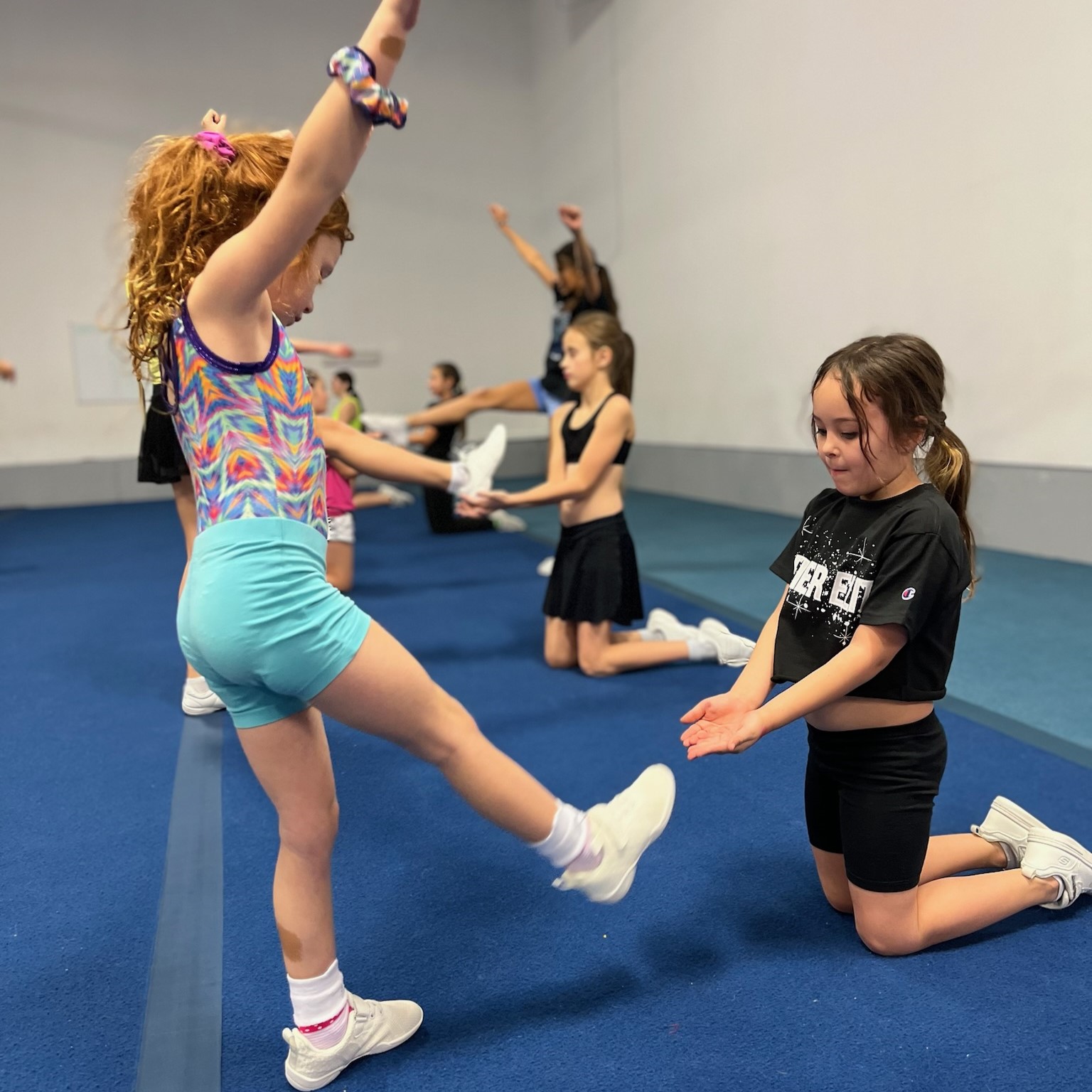
What's the Difference Anyways?!
All-Star cheerleading, dance, and gymnastics are dynamic and highly athletic disciplines, each with its own unique characteristics, goals, and training methods. While they share elements of athleticism and performance, they are distinct in their focus and execution.
All-Star Cheerleading
Focus: All-Star cheerleading combines elements of gymnastics, dance, and stunting into a high-energy routine. It emphasizes teamwork, synchronization, and showmanship. Competitions often feature teams performing choreographed routines that include tumbling, jumps, stunts, and pyramids.
Training: Athletes in all-star cheer undergo rigorous training in tumbling (such as flips and rolls), stunting (partner or group acrobatics), jumps (high and synchronized), and dance (often incorporating hip-hop, jazz, or pom styles). Coaches emphasize precision, timing, and trust among team members.
Competition: All-Star cheer competitions are judged on technique, difficulty, synchronization, and entertainment value. Teams aim for flawless execution under pressure, blending athleticism with theatrical flair to impress judges and audiences alike.
Dance
Focus: Dance focuses on artistic expression through movement, rhythm, and emotion. It encompasses various styles such as ballet, jazz, hip-hop, contemporary, and lyrical. Dance performances emphasize storytelling and emotional connection with the audience.
Training: Dancers train extensively in technique, flexibility, coordination, and musicality. Classes include learning choreography, mastering dance moves (turns, leaps, kicks), and developing personal style. Dance training often emphasizes grace, fluidity, and expression.
Performance: Dance performances may be solo, duet, or group-based, showcasing the dancer’s technical proficiency, creativity, and ability to convey a narrative or mood through movement. Competitions assess dancers on technique, creativity, and stage presence.
Gymnastics
Focus: Gymnastics is a sport of precision and strength, focusing on executing acrobatic feats with grace and control. It includes disciplines such as artistic gymnastics (floor, vault, bars, beam), rhythmic gymnastics (combining dance and apparatus handling), and trampoline.
Training: Gymnasts undergo intense training in strength, flexibility, balance, and agility. They practice routines and skills on specialized equipment, mastering flips, twists, and landings. Coaches emphasize technique refinement and consistency in execution.
Competition: Gymnastics competitions are judged on technical difficulty, execution, form, and artistic presentation. Athletes strive for flawless performances in their routines, showcasing their athleticism and mastery of gymnastic skills to earn points from judges.
Key Differences
While all-star cheerleading incorporates elements of dance and gymnastics, its primary focus is on team-based routines that combine athleticism with entertainment. Dance emphasizes artistic expression and storytelling through movement, while gymnastics focuses on individual performance in executing acrobatic skills with precision and control.
In summary, all-star cheerleading, dance, and gymnastics each offer unique opportunities for athletes to showcase their skills and passion for movement and performance. Understanding these differences can help athletes and enthusiasts appreciate the distinct challenges and rewards of each discipline, whether it’s the teamwork and synchronization of cheerleading, the artistic expression of dance, or the precision and athleticism of gymnastics.

